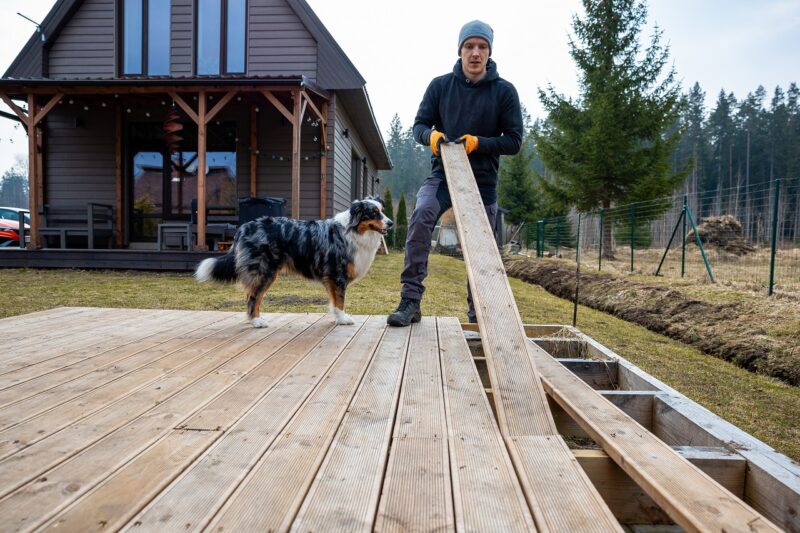Published: 13/05/25 By: Mike Bekin
When undertaking a large-scale decking project, ensuring proper board spacing is crucial for both structural integrity and long-term durability. If you do not, you can leave your decking open to a number of problems. To learn more, we have put together this guide exploring the importance of large-scale decking board spacing; including why it is important, and key considerations for both lengthwise and board end spacing.
Why Does Proper Decking Board Spacing Matter?
Timber expands and contracts as humidity, moisture levels and temperature fluctuate. This is not a problem if you are well-prepared, but if you are not, your timber decking can struggle with shifting boards. Proper spacing accommodates the natural movement of your timber decking, preventing boards from pressing against each other and buckling.
It is also important to consider water drainage. No gaps between your decking boards can cause water to pool on top of your decking, leading to issues with mould and rotting timber.
Ideal Spacing for Lengthwise Timber Decking Boards
Your lengthwise timber boards are those that lie side-by-side.
When accounting for UK weather and temperatures, the Timber Decking and Cladding Association (TDCA) recommends leaving a gap of between 5-8mm between each of your timber decking boards lengthwise. This also applies to large-scale timber decking projects.
For timber species with excellent dimensional stability, which are classed as ‘low movement’, such as Iroko, Cumaru and Ipe, you might be able to do a little less. However, if you are unsure, it is best to stick to this guide.
If you are not in the UK, ideal spacing can vary depending on your average humidity levels and moisture fluctuations. Be sure to speak to a local decking team for location-specific information.
Proper Spacing for Decking Board Ends
Your board ends are the two narrow sides of your timber boards. For large-scale decking projects, it is common for you to need more than one timber board to complete a length, meaning that your board ends have to butt together. This makes spacing your board ends another vital consideration.
Your board ends can be placed together when creating a length, though this should not be a tight fit. Allow for a little movement, though you will not necessarily need as much as 5-8mm.
If your board ends hit a post, make sure there is a 5mm space. If your board ends hit your building walls, add a 10mm gap.
Best Practices for Large-Scale Decking Spacing
Large-scale decking projects are demanding. To make your project a little simpler, the EcoChoice team has put together some top tips for your decking board spacing:
- Use spacers: Spacers or gap gauges allow for consistency and make it easier to maintain uniformity throughout your decking.
- Follow species recommendations: Different timber species can have slightly different needs. If you are choosing timber for a large-scale decking project, let us know and we will advise you on the best spacing recommendations for your specific species.
- Secure your boards: Fasten your timber boards securely after spacing, allowing them to move without excessive shifting.
Get More Advice From the EcoChoice Team
Need a little more help before embarking on your large-scale decking project? Ensure longevity and structural integrity with our professional input. Reach out to the EcoChoice team for more timber tips.
Tags: decking boards
Categories: Insights
